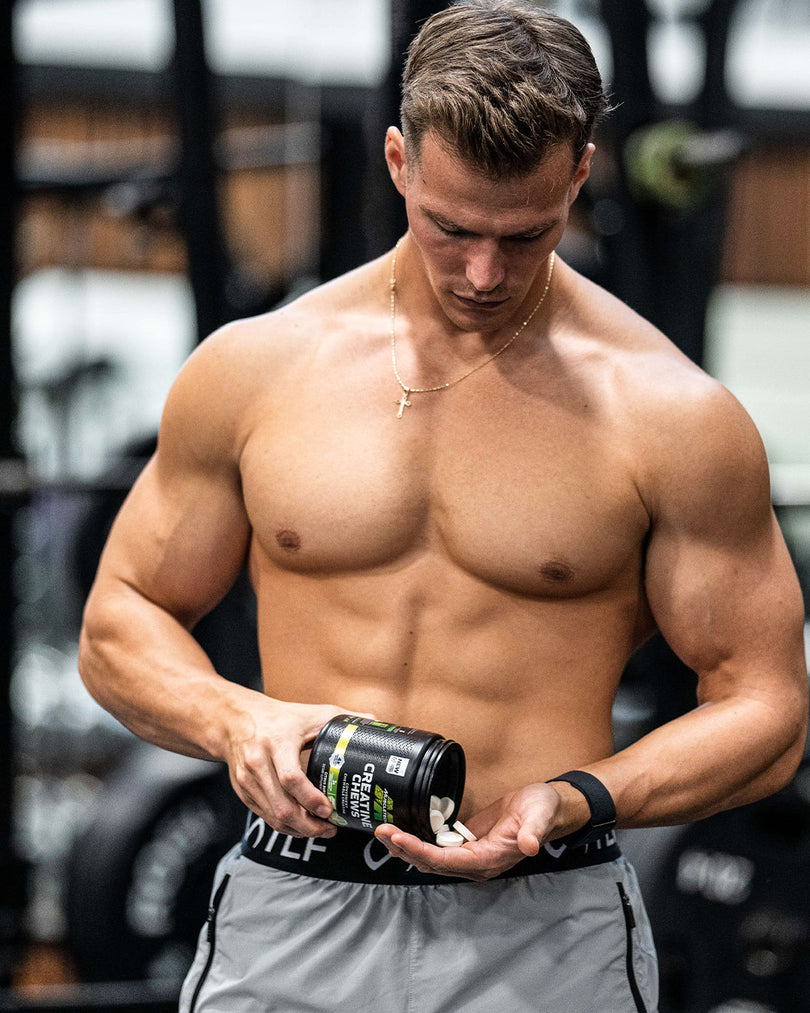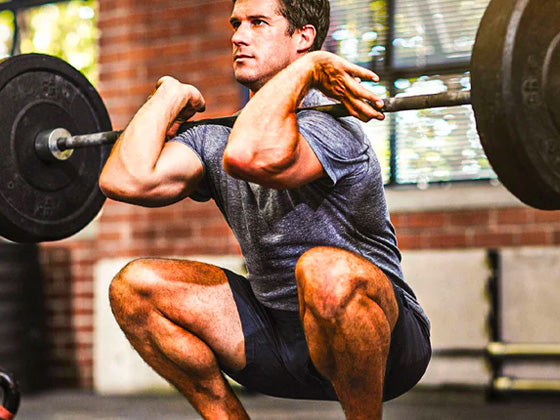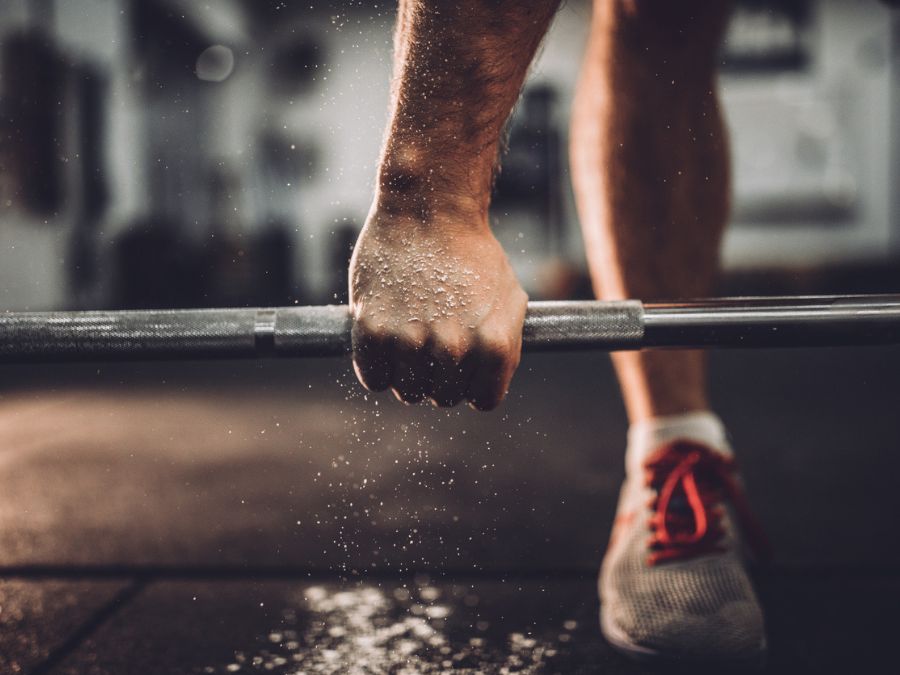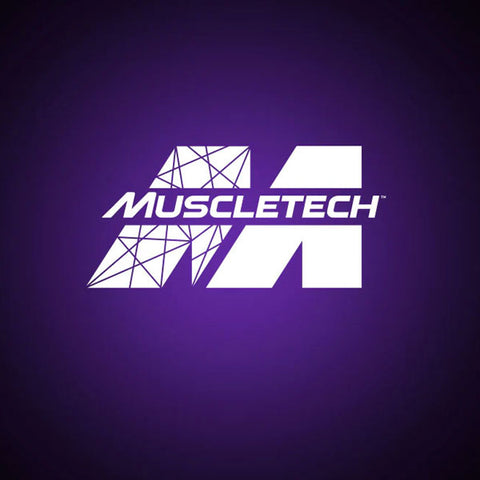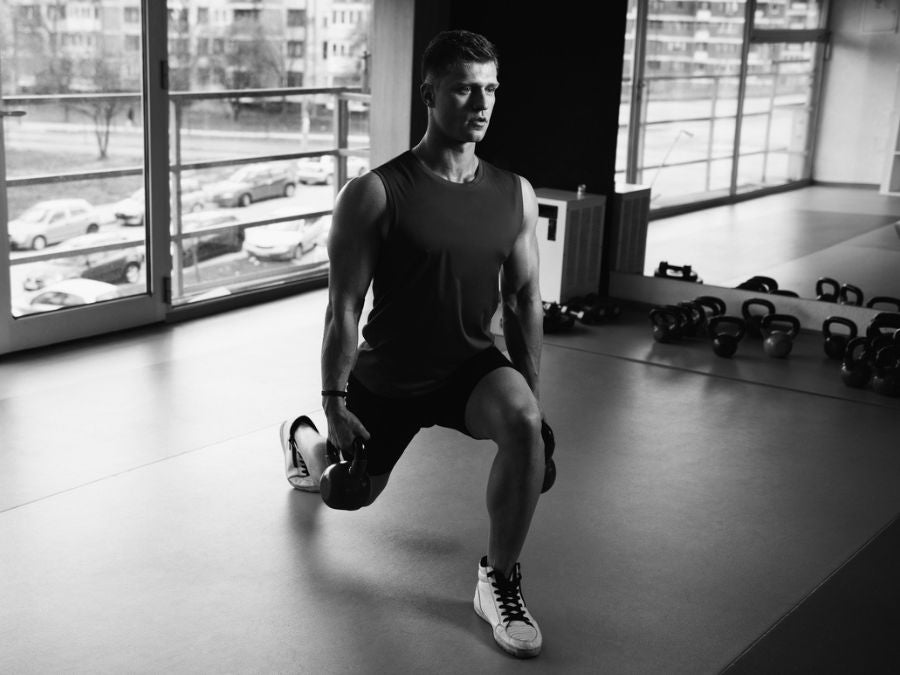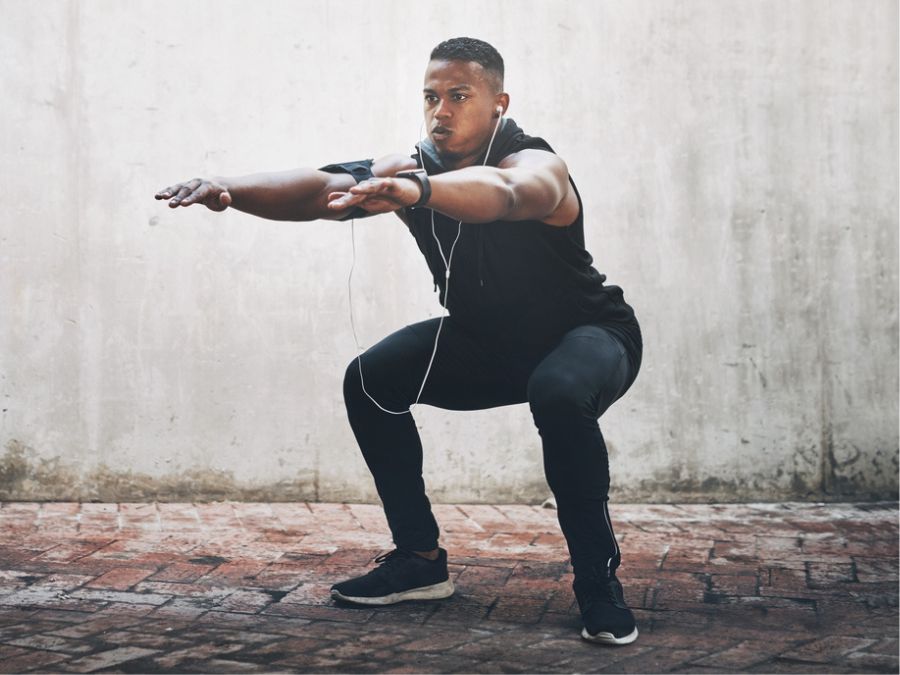Deadlifts are undoubtedly one of the greatest exercises out there, considering their countless variations. According to the National Strength and Conditioning Association, deadlifts improve overall bone density, muscle mass, and dynamic strength development, in addition to lower back pain and increased performance and endurance. In this article, we’ll take a deep dive into one of the best alternatives to this exercise - the straight-leg deadlift. You’ll find out how to do it properly, along with its benefits and a few alternatives if you’re unable to do them or want to switch up your routine.
What Are Straight Leg Deadlifts?
Let’s start with the basics. Also known as stiff-leg deadlifts, this exercise falls under hip hinges. More specifically, the hips move horizontally instead of vertically, like the squat. What separates it from other deadlifts is its form. As the name suggests, straight-leg deadlifts are characterized by slightly bent knees, higher hips, almost upright shins, and no bar-shin contact. Moreover, this is a strict pull exercise, meaning every rep begins and ends with the barbell being on the ground.
What Muscles Do Straight-Leg Deadlifts Work?
Straight-leg deadlifts are categorized as an isolation exercise, but that’s not technically correct. Namely, these exercises involve several muscles, all of which can be classified as agonists. These muscles include:
- Hamstrings
- Erector spinae
- Gluteus maximus
When looking into muscle activation, aside from the ones located in your lower body, stiff-leg deadlifts contract your biceps as well. However, the exercise doesn’t target each muscle equally. Specifically, the semitendious are more stimulated in contrast to the biceps femoris.
Also Read: The Ultimate Push Pull Legs Routine for Ultimate Mass Gains
How To Perform Straight-Leg Deadlifts
This exercise is relatively simple to do, but you need to pay extra attention to your form. While we’ll go into detail about this shortly, know that even the slightest “wrong” movement can result in severe back pain and even disc fractures.
To do straight-leg deadlifts with a barbell properly, start by setting the bar directly in front of your feet, about two to three inches away from your shins. Slide your hips back and grip the bar without arching your lower and upper back. Your neck, hips, and back need to be completely aligned, meaning there shouldn’t be any curvatures.
Slightly bend the knees while keeping your legs completely stiff, and once you’re ready to pull the barbell up, drive your hips into an upright position. Ensure the back is completely straight as you go up. Once locked at the top, squeeze the glutes and allow the barbell to drop smoothly, without any sudden movements. Let it sit for a second or two, and repeat the motion immediately.
Straight-Leg Deadlift Form
While stiff-leg deadlifts are generally done with barbells, you can also use other equipment. No matter what you opt for, the exercise’s function remains the same. Here are some options you can go for:
Straight-Leg Deadlift With Dumbbells
As the name suggests, this variation of the deadlift involves dumbbells instead of the “standard” barbell. This is a great option if you prefer a more natural range of movement, as it allows you to move your arms closer together once you’re at the top of the exercise. As the dumbbells move up your body, rotate your palms to face the side of your thighs.
The only downside of this alternative is you’re using considerably less weight compared to a barbell, so it’s not ideal if you’re looking to build mass. However, this is a great option if you’re looking to improve your form, technique, and contraction.
Straight-Leg Deadlift With Cable
You’ll very rarely see someone doing a straight-leg cable deadlift, but it’s a great alternative to consider if you want to switch up your routine. Due to the machine’s orientation, you won’t be able to pull the cable as with other types of deadlifts, meaning you’ll have to pull it from a diagonal angle.
Like the previous option, you’ll use less weight, but the main focus here is to keep the knees bent slightly throughout the entire process, resulting in a deep stretch in the glutes and hamstrings.
Straight-Leg Deadlift Benefits
The reason why this exercise is a favorite among gym rats is due to straight-leg deadlift benefits. Here’s why you should absolutely include them in your workout routine:
1. Excellent Lower Body Exercise
Since stiff-leg deadlifts utilize your major lower body muscles, you’ll experience improved athletic performance and back strength. As you already know, strength training has shown positive effects in preventing and treating back pain and keeping the spine in optimal health.
2. Learning How To Hip Hinge
This exercise requires you to lean forward without arching your back, meaning it involves a hip hinge. You can find this in many other exercises as well, like bent-over rows, power cleans, and kettlebell swings. By getting the hang of hip hinges, all of these exercises will be much easier and safer to do.
3. Minimal Quadriceps Involvement
Compared to regular deadlifts, the straight-leg alternative doesn’t involve a lot of quad activation, as all of the work goes into your lower body muscles. With that in mind, if you want to increase the strength and definition of your glutes and hamstrings, doing this exercise is a must.
4. Great For Adding Variety To Your Workouts
Although regular deadlifts are highly beneficial, doing them repetitively can get rather tedious. With that in mind, straight-leg deadlifts with a barbell or any other equipment are a great way to switch things up once in a while. You’ll be targeting the same muscles, and your workouts will be more diverse and fun to do.
5. Increased Hamstring Flexibility
Lastly, while you may believe straight-leg deadlift benefits only relate to strength, they also contribute to improved flexibility as well. Doing this exercise offers a deep stretch in your hamstrings. Tight hamstrings can affect both knee and back health, lowering your athletic performance altogether.
Straight-Leg Deadlift Alternatives
With the benefits out of the way, you should also know plenty of straight-leg deadlift alternatives target the same muscle groups. Doing them will add a variety to your workouts, and some are even recommended for people with pre-existing back conditions. Here are a few of the best ones.
1. Straight-Leg Dumbbell Deadlifts
As previously mentioned, you can also do stiff-leg deadlifts with dumbbells. The “standard” barbell version is considered more effective, but it can also put a lot of strain on your back, which might not be ideal for people who suffer from back problems. Since this straight-leg deadlift alternative uses considerably less weight, you can focus on your technique and performance without additional difficulty.
To do this exercise, stand with your legs hip-width apart with a dumbbell in each hand and your knees slightly locked. Without rounding your back and moving your legs, hinge your hips forward and lower the dumbbells toward the outside of your knees. Go as low as you can, meaning you shouldn’t feel any strain in your hamstrings. Go back to the initial position and repeat.
2. Good Mornings
While regular stiff-leg deadlifts require you to hold a barbell, with good mornings, the weight sits on your shoulders. This is recommended for experienced gym-goers who want to challenge their posterior muscles due to the increased demand for them by the exercises.
Hold a barbell across your upper back like you’d do for squats and position your legs hip-width apart, with the knees slightly bent. Push your hips back and hinge forward while keeping the core contracted, but ensure you’re not rounding your back. Go as far as your flexibility allows it, stand back up, and repeat the process.
3. Romanian Deadlifts
Unsurprisingly, many people confuse straight-leg deadlifts with their Romanian counterparts. Granted, they look rather similar, but there is a key difference between them, specifically in the starting position. Romanian deadlifts begin at the top of the movement, and the barbell is never set on the floor throughout the entire routine. Additionally, the hip movement is much more defined, allowing you to lift more weight. With that, this straight-leg deadlift alternative is perfect if you want to bulk up your posterior muscles.
3. Kettlebell Swings
If you want to get your heart rate up while doing deadlifts, the kettlebell swing is a great exercise for you. Because this exercise uses a lot of momentum, doing the swings repeatedly will allow you to gain more power and force really quickly. However, because it’s fast-paced, pay close attention to your breathing along with your form.
To do the swings, hold the kettlebell in front of your hips and bend your knees slightly. Push your hips forward and start swinging it while keeping your arms straight. You can hold the kettlebell with a single arm for an even bigger challenge. In case you don’t have the equipment, use a dumbbell as an alternative.
4. Hip Thrusts
As previously mentioned, straight-leg deadlifts can put quite a big strain on your back, especially if your hamstrings aren’t flexible enough. For that reason, you can do hip thrusts as a substitute, as they target the same muscle groups.
Place your back on a back with your glutes on the floor and a barbell across your hips. Drive your feet onto the floor, push your hips up by utilizing your glutes, and hold this position for a few seconds. Go back to the initial position and repeat.
5. Single-Leg Straight-Leg Deadlift
The final straight-leg deadlift alternative is suitable for people with left-to-right leg imbalance. If you fall into this category, this imbalance can greatly impact your performance and can even cause severe damage if you’re not careful enough. With that in mind, shifting your weight from left to right will keep you completely safe while improving your posterior muscle strength at the same time.
Stand with your feet together, lifting one into the air, while the other needs to be completely locked in, with the knee stiff. Hinge your hips forward and reach down toward the floor. As always, ensure your back isn’t rounded, complete all reps on one side, and then move to the other.
Straight-Leg Deadlift Tips & Common Mistakes To Avoid
As we’re coming toward the end of our ultimate straight-leg deadlift guide, we’d like to share a few tips to ensure maximum performance and safety.
Mixed Grip
If you’re a beginner, your hands might start to slip before your posterior chain. In this case, use a mixed grip - hold the barbell with one hand inwards, keeping the other faced in the opposite direction. However, you need to switch between the grips as you finish your sets.
Use Light/Moderate Weights
While you may be compelled to do stiff-leg deadlifts with heavy weights, we advise you to suppress this urge, especially if you’re doing them for the first time. This exercise is not intended for lifting heavy loads as it can result in poor form and further disc fractures if you’re not careful enough. Although it's essential to strength training, consider this an endurance exercise.
Standing On A Block/Bench/Step
Some bodybuilders like to do straight-leg deadlifts while standing on a step or bench, but know this is a rather outdated practice because it doesn’t achieve the desired effect. While you may believe that being more elevated will provide a bigger stretch in your hamstrings, this results in a rounded back. As you know by now, this is the last thing you want!
Leaning Back
Throughout this guide, we emphasized how important it is to keep proper form, as leaning back with heavy weights in your hands can result in severe injury. That said, you don’t need that extra push - it’ll only do you more harm!
Don’t Move Too Fast
Even if you feel confident to do straight-leg deadlifts at a rapid pace, refrain from doing this. Working out quickly can cause overstretched hamstrings, leading to muscle tears. Instead, keep a controlled pace, resting for two seconds after each rep.
Over to You
With this, we conclude our guide on straight-leg deadlifts. You can enjoy its numerous benefits; just pay attention to your form and ensure your back isn’t rounded.
Check out the rest of our blogs for even more information on working out and supplements.
Read Our Top Blogs:


